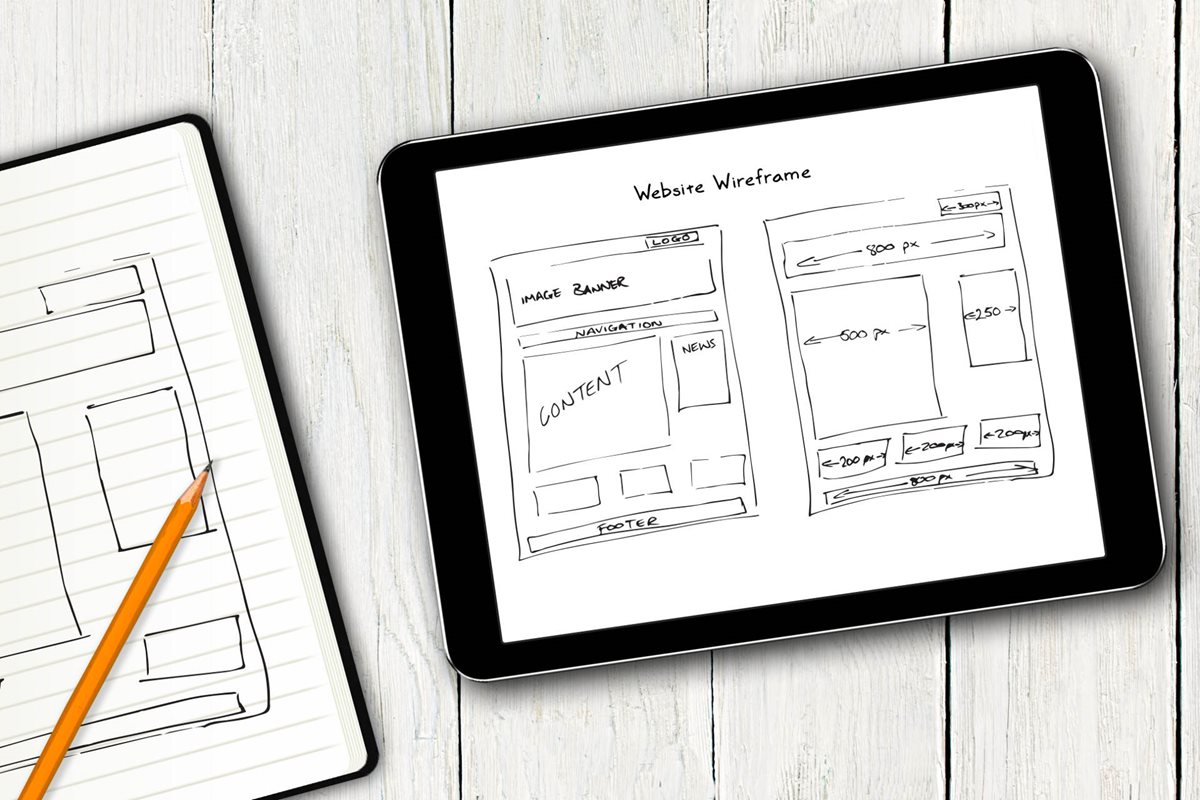Since we created Strafe Creative back in 2010, we’ve designed and built over 100 websites for a wide range of industries. By following the ethos of “client success through great design,” we aim to boost conversion rates and give our clients great ROI through intuitive and intelligent design. The average conversion rate for UK websites is somewhere around 1%; Strafe-designed websites convert at around 4.3%, over 4x more.
This focus on conversion-based design means that we’ve learnt a lot over the years about creating successful websites. Though every website is different, there are several key features that we always include. Here are a few:
1. Make it obvious what you’re offering
Users come to your website to find out more about what you do, so if it’s not obvious, they’re going to click that “back” button and leave. Therefore, you need to make sure that the information they’re looking for is obvious and easily-accessible.
If you’re lucky enough to have a self-explanatory company name, then this can be easy. Equally, maybe your tagline or company imagery can explain your offering quickly. However, if your offering is a little more complicated, you need to make sure the right information is available quickly and easily. Ensure all important information is above the fold and remember the five second rule – if users can’t figure out what you do within five seconds, they’re going to leave your site.
You’d be surprised how many websites don’t make it obvious what they do, and their conversion rates suffer because of it. Explaining what your company does is one of the easiest things you can do to increase conversion, and the benefits are endless.
2. Credibility is key
Users are no longer satisfied with simply finding a company that offers what they want. Now they want to ensure that you’re credible, and can be trusted with their time and money. Therefore, it’s important that you prove your credibility through your website.
Social proofing is a very common way of doing this. This is a psychosocial phenomenon where users will follow the example of others, as they assume that others are more knowledgeable about a given situation – knowing that others approve of what you do can be a huge factor in conversion. There are several different ways to incorporate social proofing into your website design, including:
- Case studies – showcasing successful applications of your product/service can do a lot to persuade users to convert, especially if the case study is relevant to their industry/profession.
- Testimonials/review – research has found that displaying customer reviews can increase conversion rates by up to 270%. Reviews help convince potential users that your product or service is worth investing in, and can be incredibly helpful when it comes to boosting conversion rates. Think about how often you check reviews before making a purchase – it has a big impact.
- Awards – awards provide the same credibility boost as reviews, but on a greater scale. Awards generally represent approval from an entire industry, and so are worth a lot in terms of credibility.
Social proofing is most effective when you include a name, job title and photo (if applicable), as it makes the proofing seem more genuine. This increases their trustworthiness, and therefore their effectiveness.
3. Give your business a face
The area of your site that contains information about your business – whether it’s the “About Us” page or just a section of your homepage - is one of the most visited locations on any given company’s site, and plays a huge role in the impression that your company leaves on a potential customer, especially if you have little to no offline presence. Your “About Us” page (or equivalent) is where customers will go to learn more about your company, and the people behind the brand; users will frequently visit this page before converting.
Features to consider including on your “About Us” page could include your company’s vision/philosophy, the story behind your brand, a company timeline, or team member profiles – it all depends on your target market. If you want to appear open and friendly, include your team’s social media profiles; if you’re a B2B company, connect with LinkedIn; if your company aims to change something about the world, be sure to detail the philosophy behind that.
4. Make it easy to convert
Humans are lazy, so the easier you make it to convert, the more conversions you’ll get. This is why landing pages work so well – because users are confronted with one simple choice. Having one button in your menu/header isn’t enough to encourage conversions anymore – you have to include a CTA (call to action) on every page of your website. This might seem like overkill, but it really works.
Confronting users with the decision to convert makes them much more likely to do so, compared to leaving them to remember to convert by themselves. Giving users a yes/no choice, rather than leaving them to remember to make the decision, makes conversion much more likely.
In conclusion
Even though every website is different, conversion is almost always one of the tops goals for websites.
Conversion is now one of the most important metrics measured on websites, and therefore one of the biggest markers of a website’s success.
Letting conversion direct the design and format of your website can have a massive impact on your conversion rates, so it’s important to bear them in mind when looking to refresh your site! Every aspect of your website’s design can impact conversion, from the color of your CTA buttons to the language you use. These tips are just a selection of what we’ve learnt about website design over the years, but they are an easy way to boost your own conversion rates without big costs.
Access the latest business knowledge in Marketing
Get Access



Comments
Join the conversation...